
Key Points
- Health Care Tech – Offense in a Defensive Sector?
- Long-Term Breadth Remains Strong Across Markets
- Intermediate-Term Breadth is Neutral
- Short-Term Breadth has Room to Oversold Levels
- No Breakout for Equal Weight vs. Cap Weight
Chart in Focus:
The S&P 500 Health Care Technology Index has traded flat for the past two years, oscillating above and below the 50-day moving average. While the index remains in the middle of this two-year trading range, there are signs of a turn on a relative basis. The group traded to a 21-day high vs. the S&P 500 yesterday, and is above the 50-day moving average, which is beginning to turn higher. Perhaps this is a bit of offense in a traditionally defensive sector?
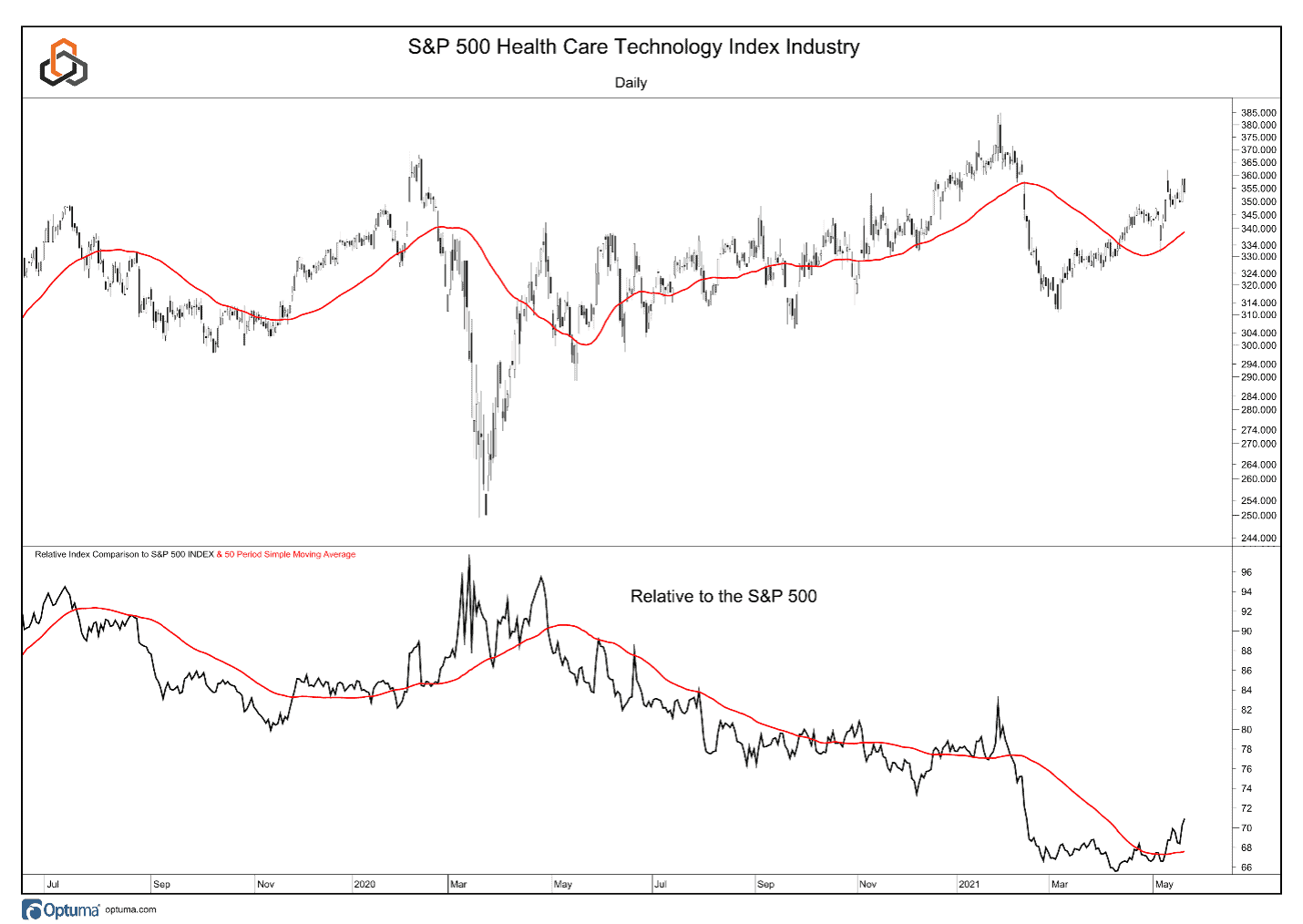
S&P 500 Breadth
The Advance/Decline Line for the S&P 500 continues to track the index in lockstep. Both the indicator and the index are holding above their rising 50-day moving averages after failing to make new highs this week.
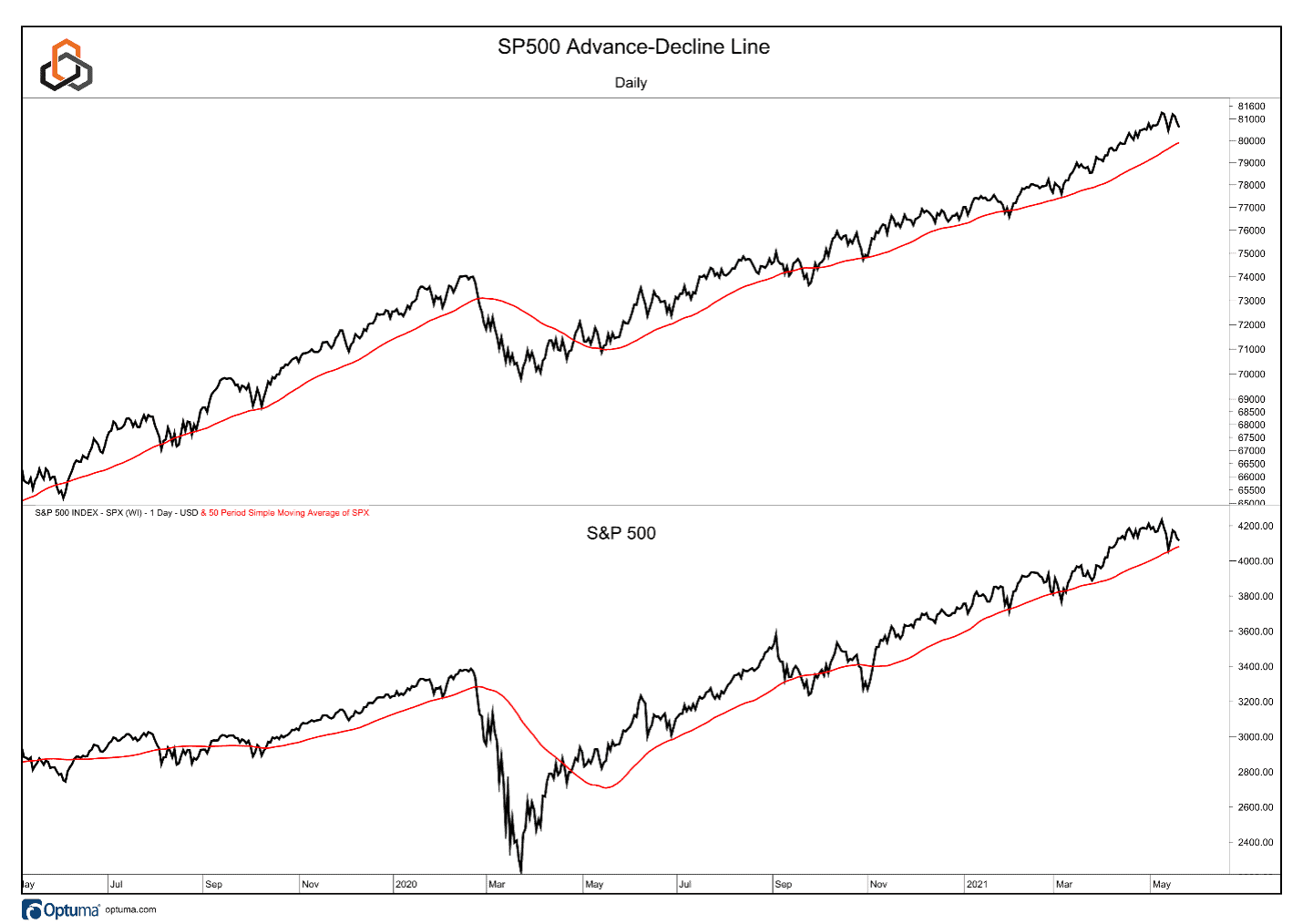
The picture becomes a bit more interesting when we look at the S&P 500 Advancing-Declining Volume Line, as this indicator is testing the 50-day moving average from above. This is an indication that volume is heavier in the stocks that have been declining than in the stocks that have been advancing.
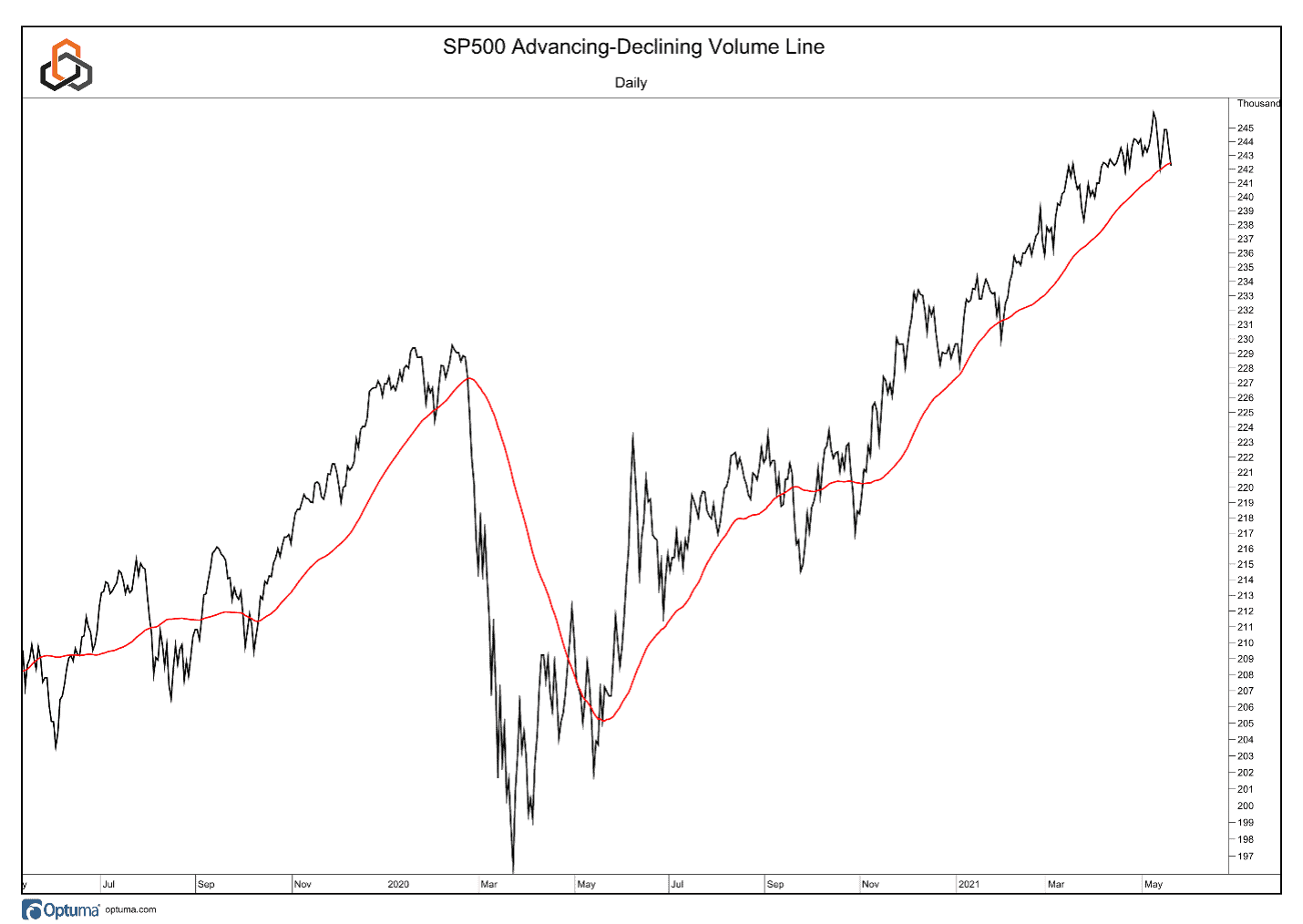
For a second week in a row, the percentage of stocks in the S&P 500 trading above their respective 200-day moving averages is below 90%. As we have said a few times over the past week, the longer-term trend for the S&P 500 remains to the upside, and that is confirmed by this indicator remaining elevated for an extended period.
As we can see, the index remains above its own 200-day moving average.
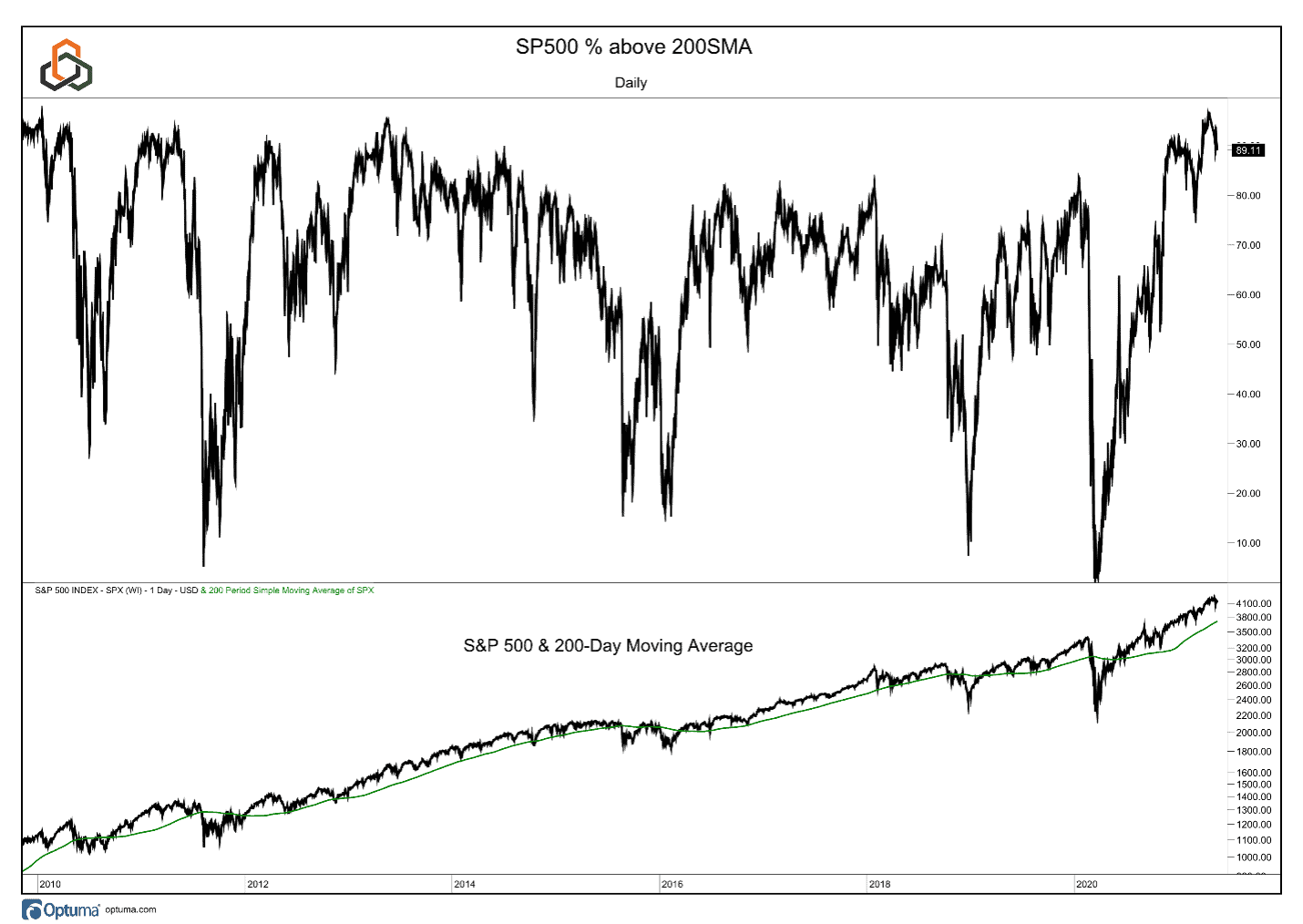
As the S&P 500 flirts with its own 50-day moving average, the percentage of holdings trading above their moving average is 65.74%, slightly higher than last week’s reading of 64.62%. Holding above the 60% level is important. A close, for the index, below its 50-day moving average that coincides with this metric dropping below the 60% would be a signal that the intermediate term trend has begun to shift to the downside.
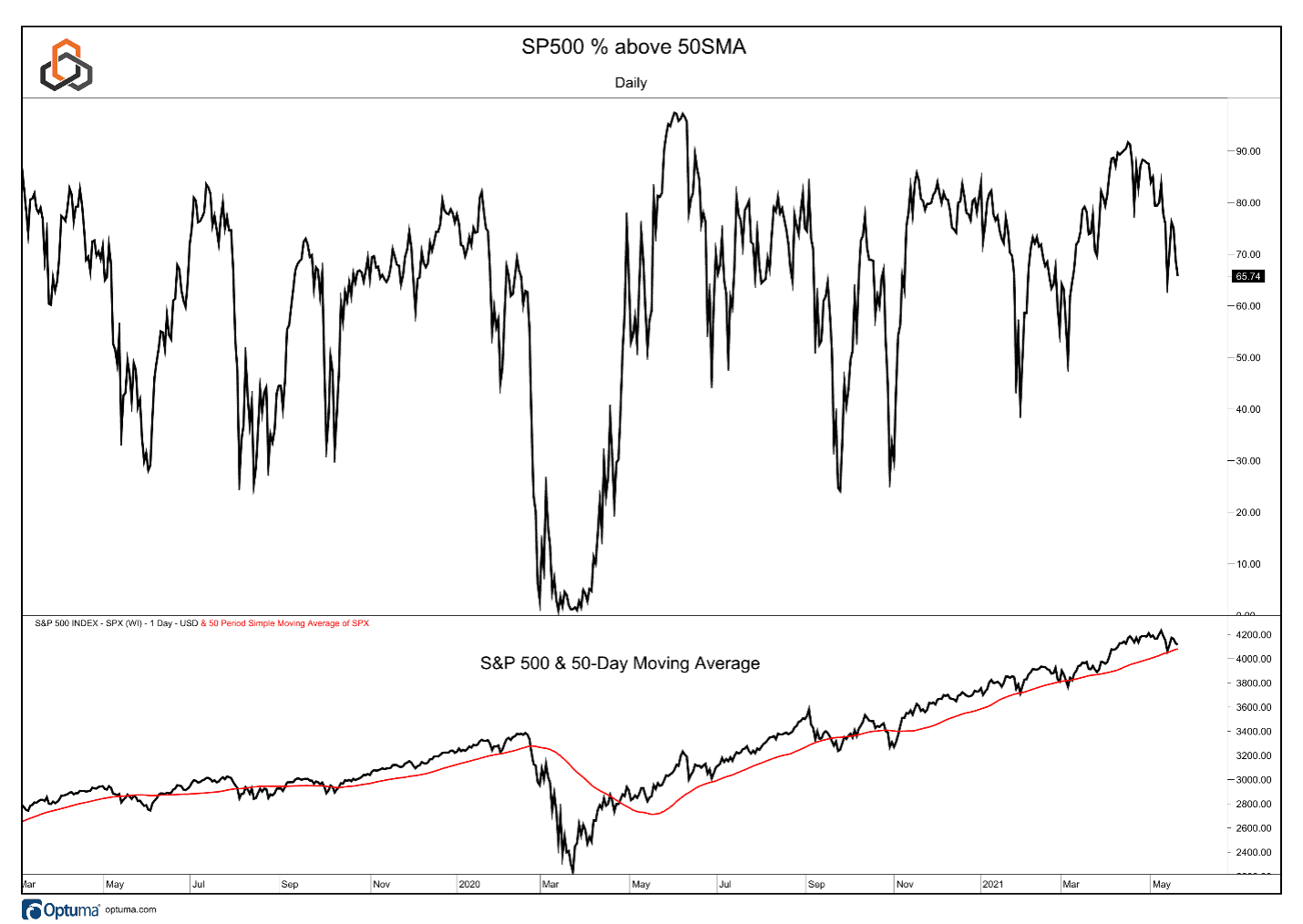
In the short-term, the percentage of stocks in the S&P 500 trading above their 20-day moving average is 39.80%, up slightly from 36.96% last week. The index itself is trading below its own 20-day moving average, which is beginning to shift from rising to flat. As we noted last week, meaningful pullbacks in the index have tended to see this indicator bottom in the 10% – 20% range while more shallow pullbacks have stopped with this metric between 40% and 50%.
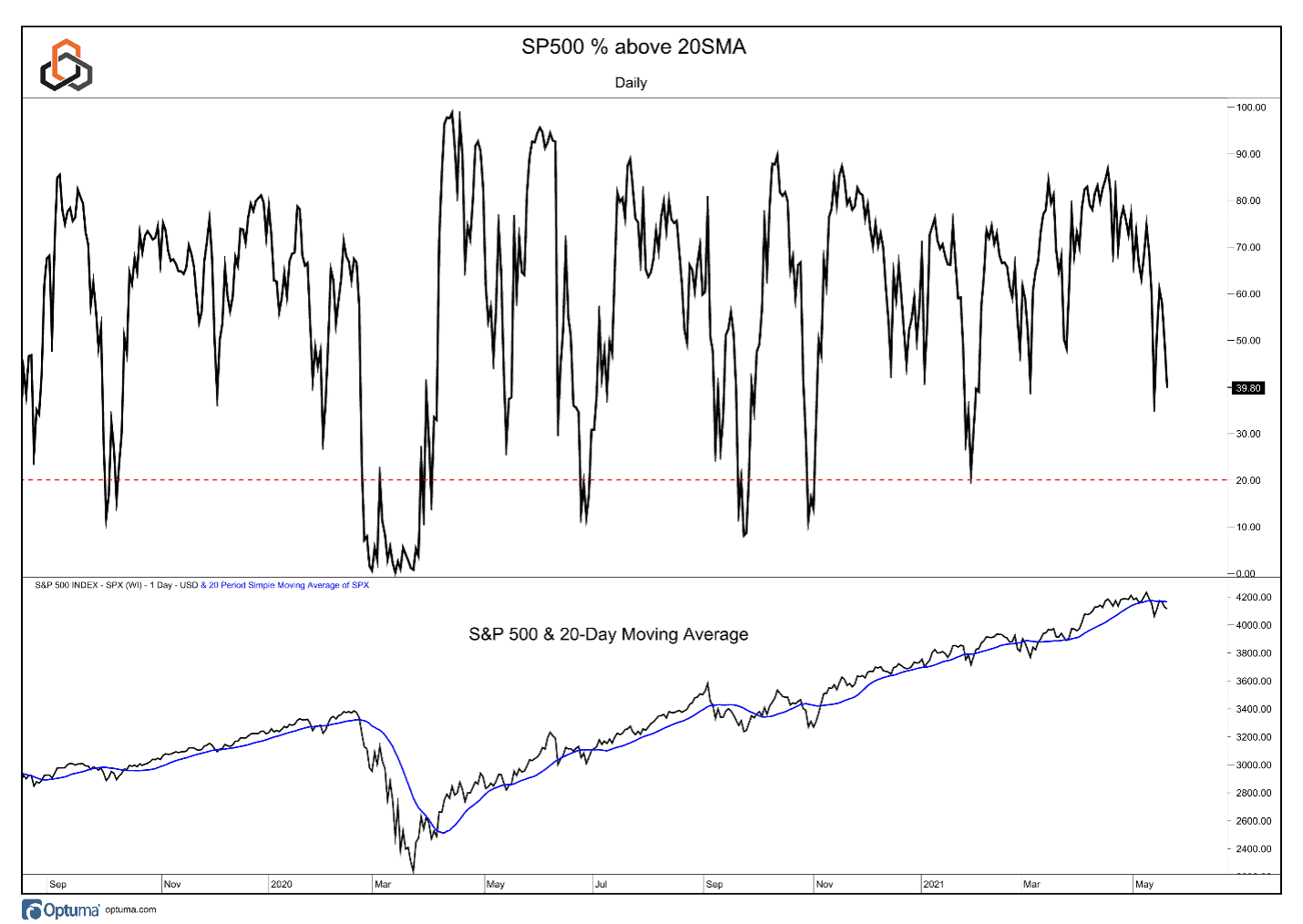
Looking at the S&P 500 Equal Weight Index relative to the S&P 500, the ratio is trading above the rising 50-day moving average as it tests the resistance zone that dates to 2012. A breakout would signal that leadership remains in the smaller names within the index, which would then signal that the current pullback is a minor pause in the S&P 500’s uptrend.
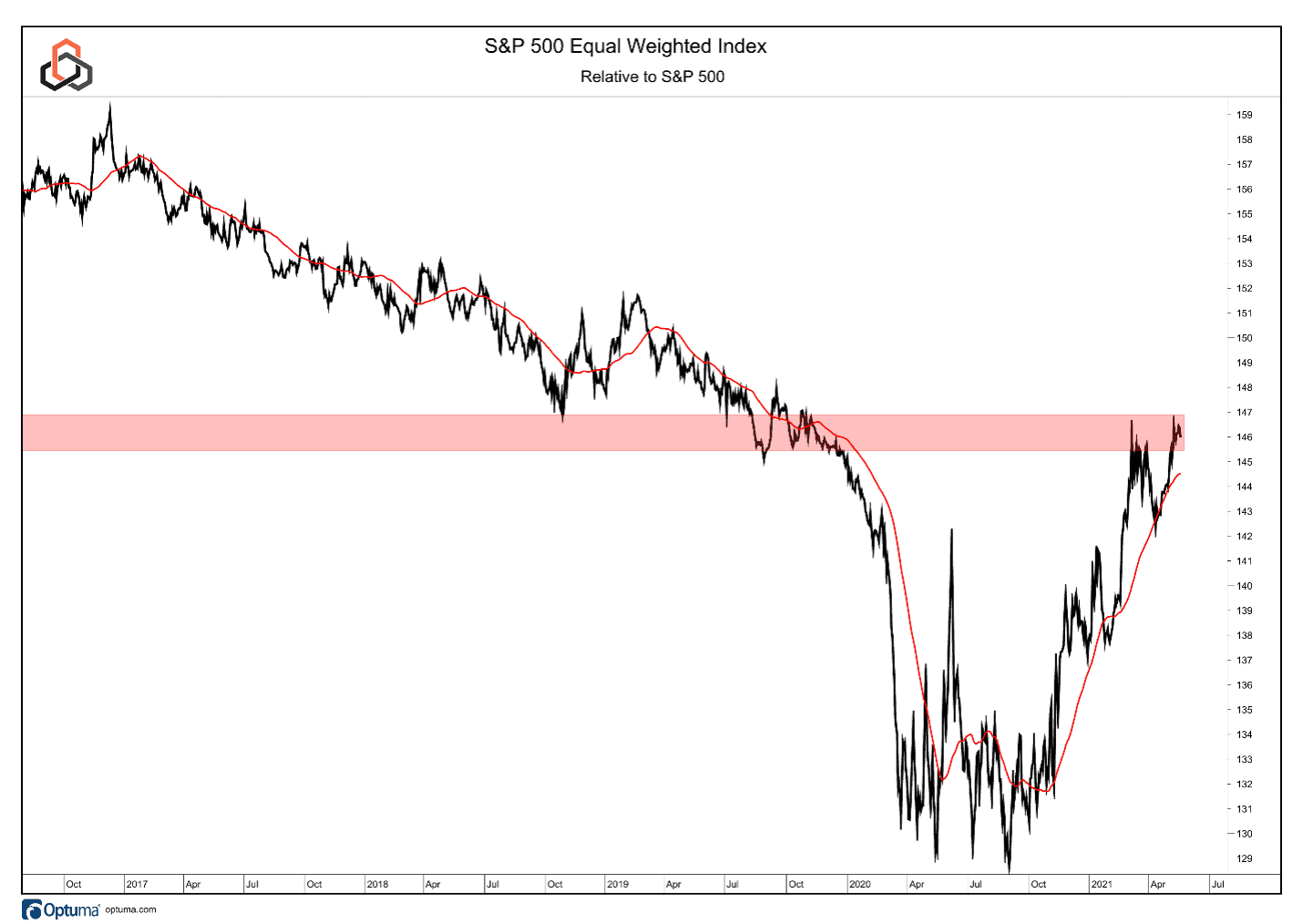
NYSE Breadth
The breadth picture for the NYSE remains similar in structure to that of the S&P 500 (long-term trends are better than short-term) but slightly weaker in terms of percentages. The percentage of stocks above their 20-day moving averages has not reached washed out levels yet. The percentage above their 50-day moving average is near 50% (neutral). The percentage above their 200-day moving average is 65%, which is still healthy but moving lower.
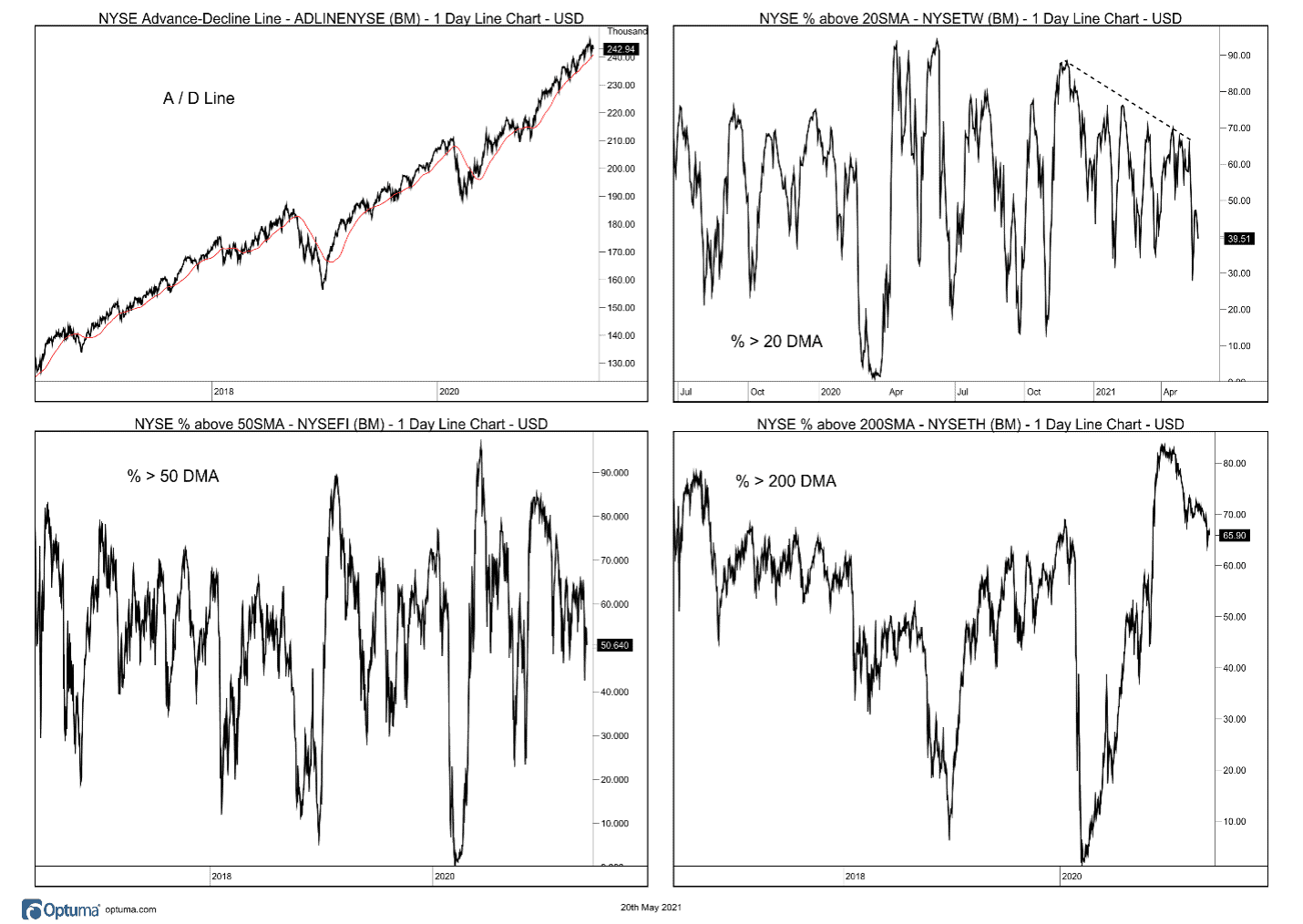
Small Cap Breadth
Within the S&P 600, the Advance/Decline Line is coming under pressure, testing the rising 50-day moving average. Across timeframes, the short and intermediate-term metrics are neutral while the long-term metric remains strong.
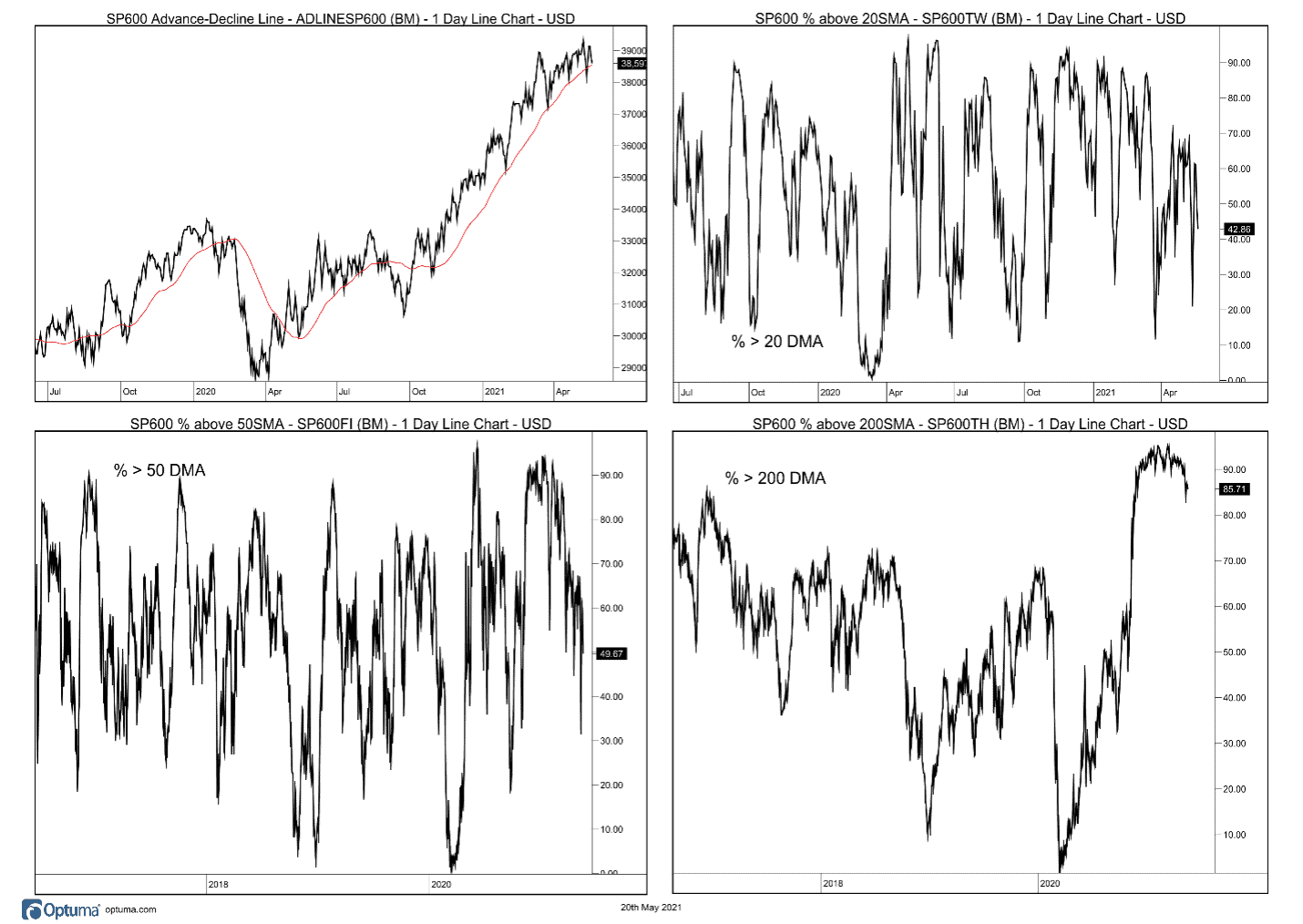
Take-Aways
We continue to view the breadth picture for the U.S. equity market as “bent, not broken.” Short-term metrics remain under pressure, while long-term metrics are healthy. This lines up with our “less aggressive” stance, which we have been discussing this week.
